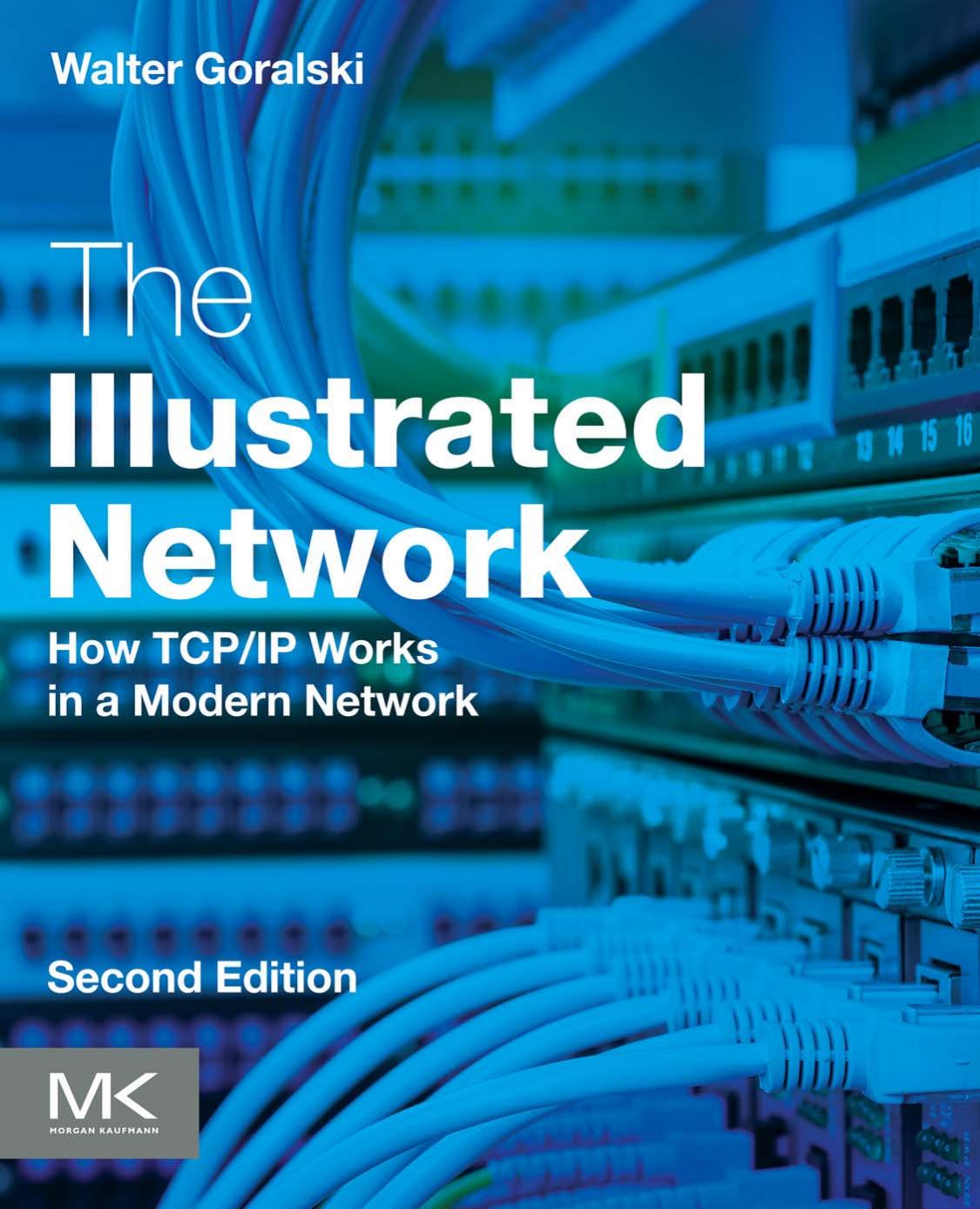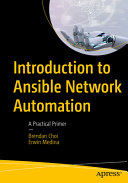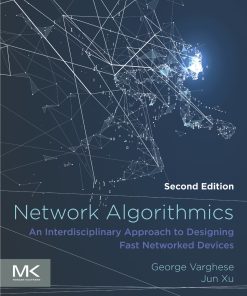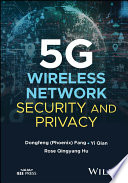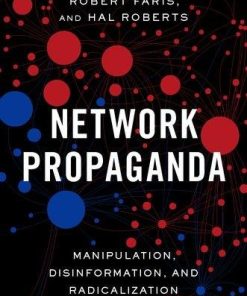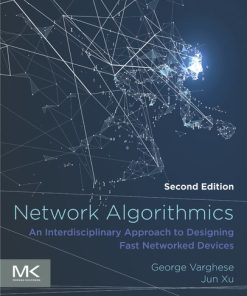The Illustrated Network: How TCP/IP Works in a Modern Network Walter Goralski
$50.00 Original price was: $50.00.$25.00Current price is: $25.00.
The Illustrated Network: How TCP/IP Works in a Modern Network – Ebook Instant Download/Delivery ISBN(s): 9780128110270,0128110279
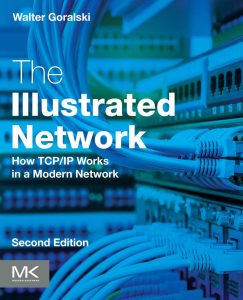
Product details:
- ISBN-10 : 0128110279
- ISBN-13 : 978-0128110270
- Author(s): Walter Goralski
The Illustrated Network: How TCP/IP Works in a Modern Network, Second Edition presents an illustrated explanation on how TCP/IP works, using consistent examples from a working network configuration that includes servers, routers and workstations. Diagnostic traces allow the reader to follow the discussion with unprecedented clarity and precision. True to its title, there are 330+ diagrams and screenshots, as well as topology diagrams and a unique repeating chapter opening diagram. Illustrations are also used as end-of-chapter questions. Based on examples of a complete and modern network, all the material comes from real objects connected and running on the network.
The book emphasizes the similarities across all networks, since all share similar components, from the smallest LAN to the global internet. Layered protocols are the rule, and all hosts attached to the Internet run certain core protocols to enable their applications to function properly.
Table contents:
Part I: Networking Basics
Chapter 1. Protocols and Layers
- Abstract
- The Illustrated Network
- Protocols
- Internet Administration
- Layers
- The TCP/IP Protocol Suite
- The Layers of TCP/IP
- The TCP/IP Protocol Suite
- Questions for Readers
Chapter 2. TCP/IP Protocols and Devices
- Abstract
- Protocol Stacks on the Illustrated Network
- Layers, Protocols, Ports, and Sockets
- The TCP/IP Protocol Stack
- The Client–Server Model
- TCP/IP Layers and Client–Server
- The IP Layer
- The Transport Layer
- The Application Layer
- Bridges, Routers, and Switches
- Questions for Readers
Chapter 3. Network Link Technologies
- Abstract
- Illustrated Network Connections
- The Data Link Layer
- The Evolution of Ethernet
- The Evolution of DSL
- The Evolution of SONET
- Wireless LANs and IEEE 802.11
- Questions for Readers
Chapter 4. Packet Optical Networks and Forward Error Correction
- Abstract
- Packet Optical Networks and Error Correction
- Packet Optical Networks and the Optical Transport Network
- Standards for Packet Optical Networks and Forward Error Correction
- Handling Single Bit Errors and Burst Errors
- Modern FEC Operation
- FEC and SONET/SDH
- FEC and OTN
- FEC Research and Development
- OTN for the Illustrated Network
- Questions for Readers
Part II: Core Protocols
Chapter 5. IPv4 and IPv6 Addressing
- Abstract
- IP Addressing
- The Network/Host Boundary
- The IPv4 Address
- The IPv6 Address
- Subnetting and Supernetting
- IPv6 Addressing Details
- Questions for Readers
Chapter 6. Address Resolution Protocol
- Abstract
- ARP and LANs
- ARP Packets
- Example ARP Operation
- ARP Variations
- ARP and IPv6
- Questions for Readers
Chapter 7. IPv4 and IPv6 Headers
- Abstract
- Packet Headers and Addresses
- The IPv4 Packet Header
- Fragmentation and IPv4
- Fragmentation and Reassembly
- A Fragmentation Example
- IPv4 and IPv6 Headers Compared
- IPv6 and Fragmentation
- Questions for Readers
Chapter 8. Internet Control Message Protocol
- Abstract
- ICMP and Ping
- The ICMP Message Format
- Sending ICMP Messages
- Ping
- Traceroute
- Path MTU
- ICMPv6
- Questions for Readers
Chapter 9. Routing
- Abstract
- Routers and Routing Tables
- Hosts and Routing Tables
- Direct and Indirect Delivery
- Questions for Readers
Chapter 10. Forwarding IP Packets
- Abstract
- Router Architectures
- Another Router Architecture
- Router Access
- Forwarding Table Lookups
- Dual Stacks, Tunneling, and IPv6
- Tunneling Mechanisms
- Transition Considerations
- Questions for Readers
Chapter 11. User Datagram Protocol
- Abstract
- UDP Ports and Sockets
- What UDP Is For
- The UDP Header
- IPv4 and IPv6 Notes
- Port Numbers
- UDP Operation
- UDP Overflows
- Questions for Readers
Chapter 12. Transmission Control Protocol
- Abstract
- TCP and Connections
- The TCP Header
- TCP Mechanisms
- Connections and the Three-Way Handshake
- Flow Control
- Performance Algorithms
- TCP Behaving Badly?
- TCP and FTP
- Questions for Readers
Chapter 13. Multiplexing and Sockets
- Abstract
- Layers and Applications
- The Socket Interface
- The Socket Interface: Good or Bad?
- The Windows Socket Interface
- Questions for Readers
Part III: Routing and Routing Protocols
Chapter 14. Routing and Peering
- Abstract
- Network Layer Routing and Switching
- Connection-Oriented and Connectionless Networks
- Host Routing Tables
- The Internet and the Autonomous System
- The Internet Today
- The Role of Routing Policies
- Peering
- Picking a Peer
- Questions for Readers
People also search:
walter goralski the illustrated network
the illustrated network pdf
the illustrated network 2nd edition pdf
the illustrated man netflix
the illustrated
an illustrated theory of numbers
You may also like…
Politics & Philosophy - Anthropology
The Collaborative Era in Science: Governing the Network 1st Edition
Computers - Networking
Introduction to Ansible Network Automation: A Practical Primer
Humanities and Social Sciences
Geography of Technology Transfer in China: A Glocal Network Approach Liu 9811274959 9789811274954
Computers - Networking
Politics & Philosophy
Network Propaganda: Manipulation, Disinformation, and Radicalization in American Politics Benkler
Business & Economics - Logistics
Uncategorized
Computers - Networking


